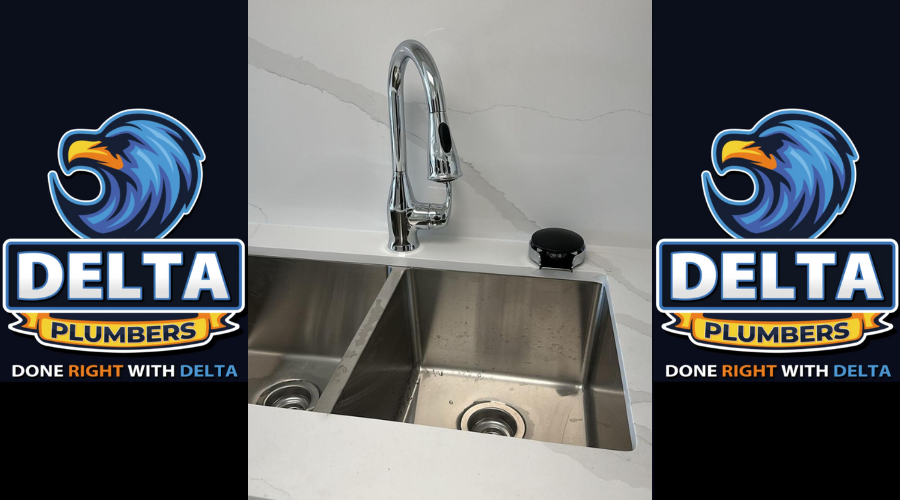Replacing or installing a new kitchen faucet is an exciting opportunity to update the look and functionality of your kitchen. With modern faucet designs offering advanced features, such as pull-out sprayers and touchless technology, a new faucet can enhance both convenience and style. While the idea of replacing a faucet may seem intimidating at first, it’s a task most homeowners can handle with basic tools and the right instructions.
In this comprehensive guide, we’ll explore everything you need to know about how to install kitchen faucet. We’ll cover common questions such as “Can I replace a kitchen faucet myself?” and “Do I need a plumber to install a new faucet?” as well as delve into the tools you’ll need, whether you should use plumber’s putty or silicone, and the average cost if you choose to hire a plumber. We’ll also discuss some quirky plumbing-related questions, like why some people put WD-40 in their toilets. By the end of this guide, you’ll feel confident enough to tackle your kitchen faucet installation.

Picture Source – Delta Plumbers
Can I Replace a Kitchen Faucet Myself?
Yes, you can replace a kitchen faucet yourself. Installing a new faucet is one of the more approachable home improvement tasks and can typically be done by homeowners with little or no plumbing experience. Whether you’re replacing a broken faucet or upgrading to a new design, most faucets come with straightforward instructions that make installation manageable. Here’s why replacing a kitchen faucet yourself is achievable:
Reasons Why You Can Replace a Kitchen Faucet Yourself
- Basic tools required: The tools needed for faucet installation—such as a wrench, screwdriver, and plumber’s tape—are commonly found in most households. Specialized tools like a basin wrench, while helpful, are inexpensive and easy to obtain.
- Step-by-step instructions: Most new kitchen faucets include detailed installation manuals with easy-to-follow steps. Additionally, online videos and tutorials are readily available to guide you through the process.
- No complicated plumbing changes: Replacing a faucet involves unscrewing the old fixture, removing it, and attaching the new one. There’s no need to alter your existing plumbing unless you encounter issues like corroded pipes or leaks.
When to Consider Hiring a Plumber
While most homeowners can replace a kitchen faucet on their own, there are instances when it’s best to hire a professional plumber:
- Old or damaged plumbing: If your home’s plumbing is old, corroded, or leaking, it may require repairs before a new faucet can be installed.
- Tight or awkward spaces: If the area under your sink is difficult to access, a plumber may have the tools and expertise to make the job easier.
- Limited time or experience: If you’re short on time or not comfortable working with plumbing, hiring a plumber can save you from potential mistakes and frustration.
Also Read: Advantages of Using PEX Piping in Plumbing

Picture Source – Delta Plumbers
Do I Need a Plumber to Install a New Faucet?
While you don’t necessarily need a plumber to install a new kitchen faucet, there are situations where hiring a professional is beneficial. In general, homeowners can install a faucet themselves, but professional assistance is recommended in certain cases.
When Hiring a Plumber Is Necessary
- Complicated plumbing setup: If your kitchen has a complex plumbing arrangement, such as extra water filters, a water softener, or other appliances, a plumber can ensure everything is correctly connected.
- Pre-existing issues: During the faucet installation, you might discover underlying problems such as cracked pipes, poor water pressure, or outdated valves. A plumber can repair these issues to prevent future complications.
- Time efficiency: A professional plumber can complete the job faster than a DIY attempt, saving you time. This is particularly helpful if you have limited availability or experience with home improvement projects.
- Ensuring proper installation: If the faucet isn’t installed correctly, it could result in leaks, poor water flow, or loose fittings. A plumber guarantees proper installation, preventing future issues and ensuring peace of mind.
Why You Might Not Need a Plumber
- Simple installations: Most modern kitchen faucets are designed for easy DIY installation. If your plumbing is in good condition, and the installation involves standard connections, you can handle the project yourself.
- Minimal modifications: Replacing an old faucet with a new one of a similar design typically doesn’t require any plumbing modifications, making it an ideal DIY project.
Also Read: Benefits of Regular Drain Cleaning

Picture Source – Delta Plumbers
What Tools Do I Need to Install a New Kitchen Faucet?
Before you start your kitchen faucet installation, gather the necessary tools to make the process smoother. Here’s a checklist of the tools you’ll need for the job:
Essential Tools for Faucet Installation
- Adjustable wrench: This versatile tool is used to tighten or loosen nuts and bolts, making it essential for faucet installation.
- Basin wrench: A basin wrench is designed to reach into tight spaces under the sink, allowing you to work on the mounting nuts that hold the faucet in place. This tool is especially useful in hard-to-reach areas where a standard wrench may not fit.
- Screwdrivers: Depending on the faucet model, you’ll need either a Phillips or flathead screwdriver to remove or secure screws.
- Plumber’s tape (Teflon tape): Plumber’s tape is wrapped around threaded pipe connections to create a watertight seal and prevent leaks. Be sure to use it on any threaded connections you make during installation.
- Plumber’s putty or silicone: These materials are used to create a watertight seal around the base of the faucet to prevent leaks. You’ll need one or the other, depending on the faucet’s design and the manufacturer’s recommendations.
- Bucket or towel: Place a bucket or towel under the sink to catch any water that may drip out when you disconnect the old faucet.
- Flashlight: Since the space under the sink is often dark, a flashlight will help you see clearly while working.
- Utility knife: This may come in handy if you need to remove old caulk or plumber’s putty from around the old faucet.
By having these tools on hand, you’ll be well-prepared to install your new kitchen faucet with minimal interruptions.
Also Read: How to Detect and Fix Silent Toilet Leaks

Picture Source – Delta Plumbers
Do I Need Plumber’s Putty to Install a New Kitchen Faucet?
Plumber’s putty is often used to create a watertight seal between a faucet and the sink, but whether you need it depends on the specific faucet you’re installing. In many cases, modern faucets come with built-in gaskets or seals that eliminate the need for plumber’s putty. However, if your faucet doesn’t include a gasket, plumber’s putty is an excellent alternative.
When to Use Plumber’s Putty
- Faucets without a built-in gasket: If the faucet base doesn’t have a pre-installed gasket or foam seal, plumber’s putty can fill the gap between the faucet and the sink to prevent water from leaking underneath.
- Versatile and easy to apply: Plumber’s putty is pliable and easy to work with, making it a good option for DIY installations. It doesn’t harden or cure like silicone, so it can be adjusted easily during installation.
When Not to Use Plumber’s Putty
- Faucets with built-in gaskets: Many modern faucets come with a rubber or foam gasket that seals the faucet to the sink. In this case, plumber’s putty isn’t necessary.
- Sink materials: Plumber’s putty isn’t suitable for use on certain materials, such as granite or stone countertops. In these cases, silicone sealant is a better choice.
In short, whether you need plumber’s putty depends on your faucet’s design. Always check the manufacturer’s instructions to see if a gasket is included or if plumber’s putty is recommended.
Also Read: Home’s Water Pressure: How to Improve by Delta Plumbers

Picture Source – Delta Plumbers
How Much Would a Plumber Charge to Replace a Faucet?
If you decide to hire a plumber to install your new kitchen faucet, the cost can vary based on several factors, including your location, the complexity of the installation, and the plumber’s experience. On average, homeowners can expect to pay between $150 to $350 for professional faucet installation.
Factors That Affect the Cost of Faucet Installation
- Type of faucet: The complexity of the faucet can affect the cost. For example, installing a basic single-handle faucet is typically less expensive than installing a faucet with multiple features, such as a pull-out sprayer or touchless sensor.
- Condition of existing plumbing: If your existing plumbing is in good condition, the installation will likely be straightforward. However, if the plumber encounters issues like leaks, corroded pipes, or outdated valves, the cost may increase due to additional labor and materials.
- Labor rates: Plumbers typically charge by the hour, and hourly rates vary depending on your location. In areas with a higher cost of living, you may pay more for labor.
- Additional services: Some plumbers charge extra for removing the old faucet, adjusting the plumbing connections, or installing additional components like water filters or garbage disposals.
It’s always a good idea to get multiple quotes from plumbers in your area to ensure you’re getting a fair price for the service. Be sure to ask about any potential additional costs upfront to avoid surprises.
Also Read: Top 10 Plumbing Myths Debunked
![]()
Picture Source – Delta Plumbers
Can I Use Silicone Instead of Plumber’s Putty on a Faucet?
Yes, you can use silicone sealant instead of plumber’s putty when installing a kitchen faucet. In fact, silicone sealant is often preferred for certain applications due to its durability and waterproofing properties. Here’s how silicone compares to plumber’s putty:
Benefits of Using Silicone Sealant
- Strong and durable: Silicone sealant forms a strong, flexible bond that is highly resistant to water, making it ideal for sealing around faucets.
- Works on all materials: Unlike plumber’s putty, which can stain or damage porous materials like granite, silicone sealant is safe to use on all sink materials, including natural stone.
- Long-lasting: Once cured, silicone sealant creates a permanent seal that is less likely to break down over time compared to plumber’s putty, which remains pliable.
When to Use Silicone Instead of Plumber’s Putty
- Stone or granite countertops: Plumber’s putty can stain or damage porous surfaces, so it’s best to use silicone sealant when installing a faucet on stone or granite sinks.
- Extra waterproofing: If you want an airtight and watertight seal that lasts for years, silicone is a great option. It’s especially useful for sealing around fixtures that are frequently exposed to water.
When to Avoid Silicone
- Adjustments needed: Silicone sealant is permanent once it cures, making it difficult to adjust the faucet after installation. If you think you might need to reposition the faucet, plumber’s putty is a better option because it remains flexible.
Both silicone and plumber’s putty can be effective, but the right choice depends on your sink material and whether you prefer a permanent seal or something more adjustable.
Also Read: Winterize Your Plumbing System: How to do it?

Picture Source – Delta Plumbers
Why Do People Put WD-40 in Their Toilet?
WD-40 is a popular household product known for its versatility, but why would someone put it in their toilet? While it might seem unusual, some people use WD-40 to clean and remove stains from their toilets. Here’s why:
The Purpose of Using WD-40 in Toilets
- Removes tough stains: WD-40’s lubricating properties help to break down mineral deposits, hard water stains, and rust in the toilet bowl. By spraying it directly onto stains and letting it sit for a few minutes, you can loosen stubborn residue and make it easier to scrub away.
- Prevents buildup: Some people believe that regular use of WD-40 can help prevent the buildup of calcium and lime deposits in the toilet.
Is It Safe to Use WD-40 in Toilets?
Although people don’t design WD-40 specifically for toilets, you can use it safely in small amounts. However, more effective and environmentally friendly products are available for toilet cleaning. Additionally, avoid excessive use of WD-40 in plumbing systems, as it can lead to clogs or damage over time.
Alternatives to WD-40 for Toilet Cleaning
- Vinegar and baking soda: This natural cleaning solution is safe for toilets and effectively removes stains and buildup.
- Commercial toilet cleaners: Many products on the market specifically clean toilets and remove hard water stains, rust, and mineral deposits.
While WD-40 can be a quick fix for tough stains, it’s not a long-term solution for keeping your toilet clean. Instead, opt for products that are designed for toilet cleaning and maintenance.
Conclusion
Installing a new kitchen faucet can be a rewarding DIY project that not only updates your kitchen’s look but also enhances functionality. With the right tools, proper instructions, and a little patience, most homeowners can handle the job themselves without the need for a plumber. However, if you encounter old or damaged plumbing, or if you’re working with complex connections, hiring a professional plumber is always a good option.
Whether you’re wondering if you need plumber’s putty, how much a plumber might charge, or even why someone would put WD-40 in their toilet, this guide covers all the essential information you need for a successful kitchen faucet installation. Be sure to follow manufacturer instructions, use the right sealants, and don’t hesitate to call in a professional if needed. With this knowledge in hand, you’re ready to tackle your kitchen faucet installation project with confidence!









